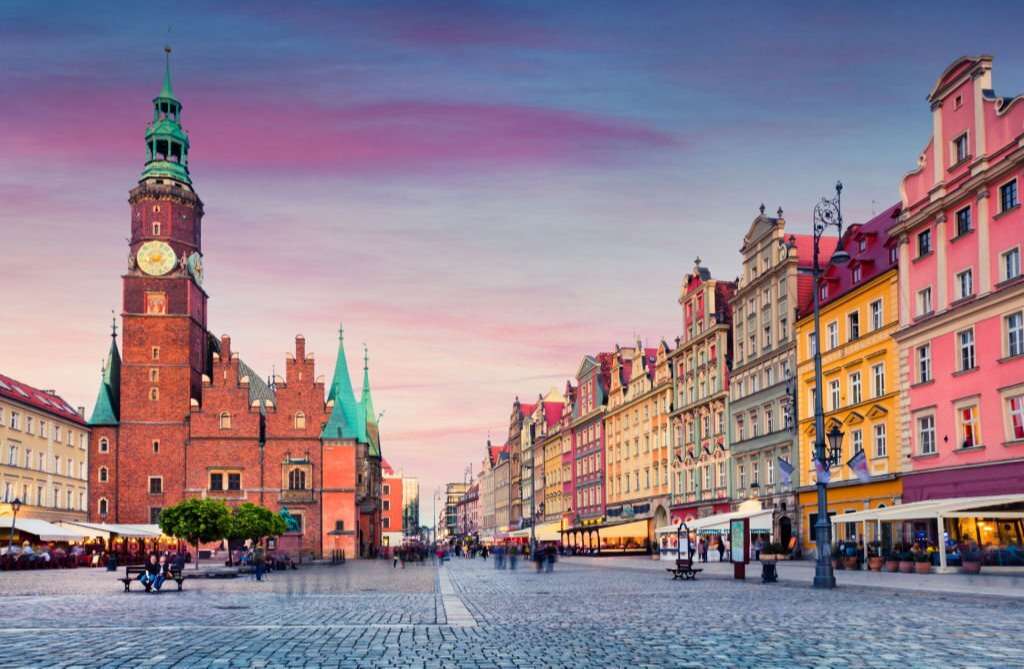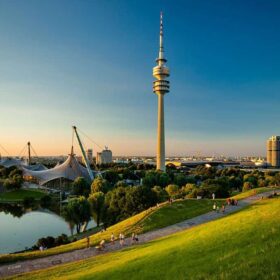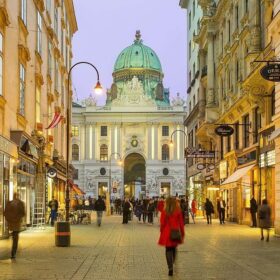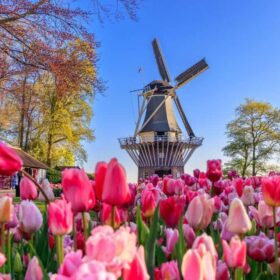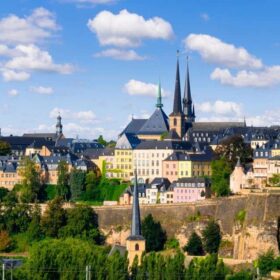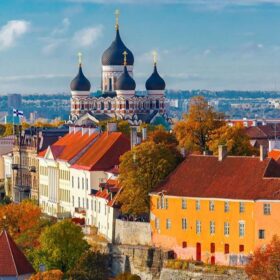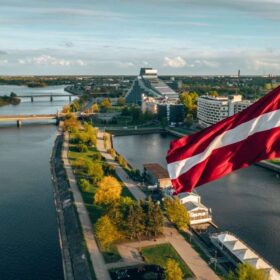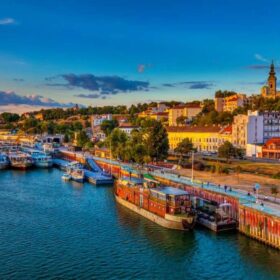Poland is a destination that offers a rich historical experience. With 14 UNESCO World Heritage Sites, visitors can explore the country’s fascinating past. Additionally, Poland boasts a diverse range of natural attractions, including majestic mountains, national parks, and rugged coastlines. One of the unexpected wonders that await travelers is the world’s oldest salt mine, adding to the allure of this captivating country.
Poland, a captivating travel destination for history enthusiasts and architecture aficionados, boasts a wealth of medieval architecture, a poignant WWII past, and enchanting villages that appear frozen in time. Filled with exciting adventures, Poland’s vibrant cities are pulsating with the allure of exploration and are an ideal gateway to uncover all the wonders this captivating country has in store.
Whether you are seeking a journey through history, an immersion in art, or a rendezvous with nature, make sure to organize your travel itinerary using our comprehensive guide to the most captivating tourist attractions in Poland.
Main Market Square
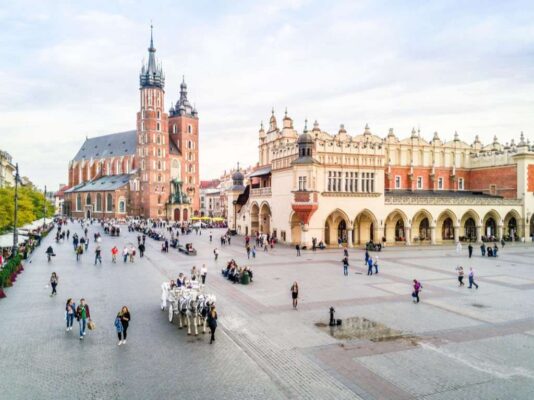
Located in the heart of Kraków’s Old Town, the Main Market Square is a captivating destination for travelers. With its origins tracing back to the 13th century, this historic square stands as the largest medieval town square in all of Europe. It holds immense cultural significance and is widely regarded as one of Poland’s top tourist attractions.
The square is nestled amidst a charming array of historical townhouses, majestic palaces, and picturesque churches, creating a truly enchanting atmosphere. In the heart of the square, travelers will find the magnificent Cloth Hall, a stunning Renaissance-style building that stands tall with an exquisite attic.
Gdansk Old Town
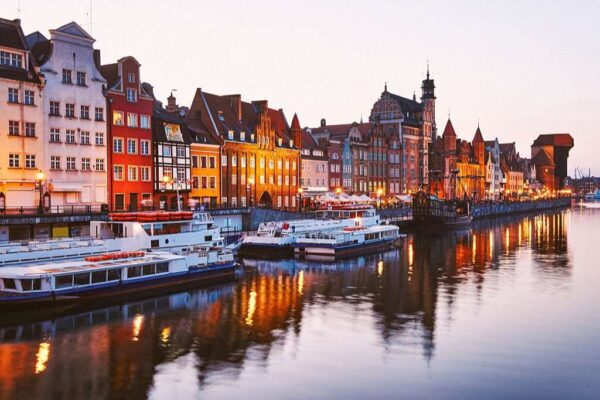
Situated on the picturesque Baltic coast, the captivating city of Gdansk beckons with its rich historical past. This enchanting destination was once under the prolonged rule of the Teutonic Knights in the 14th century. The imposing fortresses they constructed stood in stark contrast to the charming existing town, which eventually earned the moniker of Altstadt, meaning “Old Town.”
During the 15th century, Casimir IV of Poland granted permission for the demolition of the architectural marvels constructed by the Teutonic Knights. In the heart of Gdansk, travelers can explore the charming Old Town district, which showcases a plethora of well-preserved 17th century buildings. This historic area boasts an array of architectural gems, such as granaries, mills, and churches, that offer a glimpse into the city’s rich past.
Accommodation: Where to Stay in Gdansk: Best Areas & Hotels
Wieliczka Salt Mine
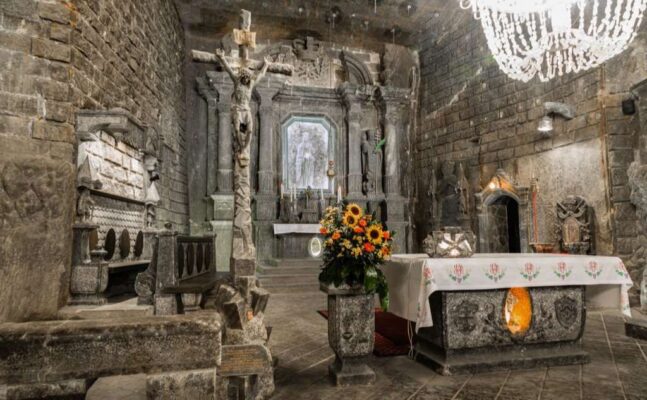
Situated on the outskirts of Krakow, the Wieliczka Salt Mine is a renowned travel destination, known for its historical significance and captivating beauty. Travelers have been exploring the site’s salt mines nonstop since the 13th century.
Discover a remarkable underground city, meticulously carved out of rock salt, boasting a captivating chapel renowned for its unparalleled acoustics, making it a must-visit attraction in Europe. Travel to a mesmerizing destination where you can explore an array of ancient sculptures intricately carved from salt. These remarkable works of art are further enhanced by the addition of contemporary sculptures created by talented artists.
Slowinski Sand Dunes
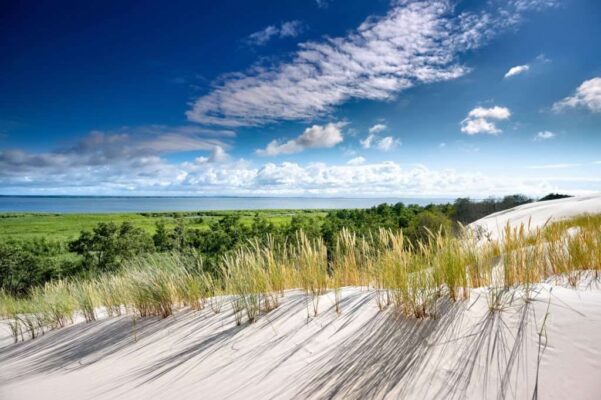
Located in the captivating Słowiński National Park in northern Poland, prepare to be mesmerized by the 500 hectares of enchanting “moving dunes.” These remarkable natural wonders are sure to ignite your sense of curiosity and leave you in awe. The name of this place originates from the fascinating phenomenon where the dunes constantly shift and migrate along the 32 kilometers of coastline. This mesmerizing process occurs as the winds and waves collide with the beach, creating a dynamic and ever-changing landscape.
When traveling to the dunes, it’s fascinating to witness how the shifting weather conditions can cause these majestic sand formations to migrate up to 10 meters annually, ultimately reaching impressive heights of 30 meters.
While exploring the captivating travel destination, you will be enthralled by the majestic sand dunes that gracefully change their shape. However, the park’s allure extends beyond these mesmerizing dunes, as it also boasts enchanting forests, tranquil bogs, picturesque lakes, and an extensive network of scenic hiking trails spanning several kilometers. And once you arrive at your destination, you’ll discover a breathtaking coastline with pristine sandy beaches and crystal-clear turquoise waters.
Warsaw Old Market Place
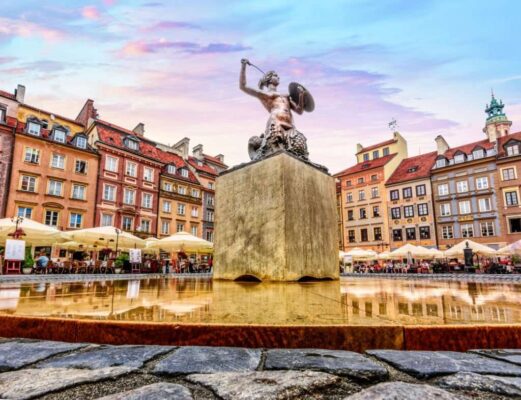
Located in the heart of Warsaw, the Old Town Market Place is a captivating destination that transports visitors back to the enchanting 13th century. Although 85 percent of the area was devastated during World War II, it has since been meticulously restored to capture its original charm and allure.
In the city’s most popular plaza, medieval architecture, Gothic, and vibrant Renaissance structures and merchant homes coexist. The 19th-century bronze statue of a sword-wielding mermaid, which has been a symbol of Warsaw since medieval times, survived the War and now remains in the plaza.
The Market Square now has several cafés and restaurants, as well as street art vendors and souvenir kiosks. The major branch of Warsaw’s Historical Museum is also situated here, and it has a huge art collection as well as a look through the city and country’s history.
Accommodation: Where to Stay in Warsaw: Best Areas & Hotels
Malbork Castle
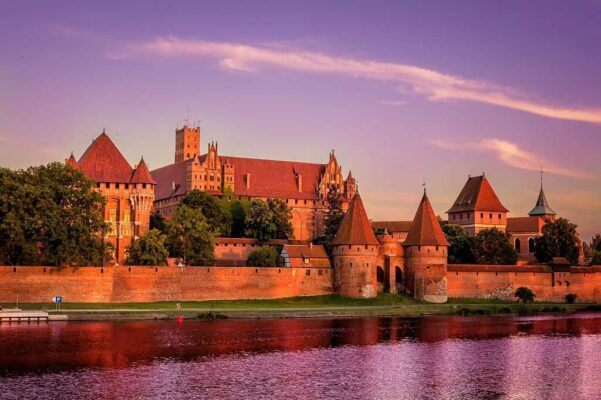
Located in the town of Malbork, the magnificent Malbork Castle stands as a testament to the rich history of the region. Originally established in 1274 by the esteemed Teutonic Knights, this grand fortress served as their strategic headquarters during their quest to conquer Polish adversaries and establish their dominion over the northern Baltic territories.
The castle underwent multiple expansions over time to accommodate the increasing number of Knights, until they eventually relocated to Königsburg in 1466. Today, Malbork boasts the most popular tourist attraction in the city.
Bialowieza Forest

Are you aware of the Bialowieza Forest? It is a magnificent destination that showcases the remnants of the primeval forests that once stretched across Europe. The picturesque forest spans across the border of Poland and the Republic of Belarus, offering convenient border crossings for tourists who prefer to explore on foot or by bicycle.
Around 800 wisents, a protected species of European bison, live in the Bialowieza Forest. While the wise are kept inside enclosed areas, guided excursions on foot or in horse-drawn carriages are provided.
Crooked Forest
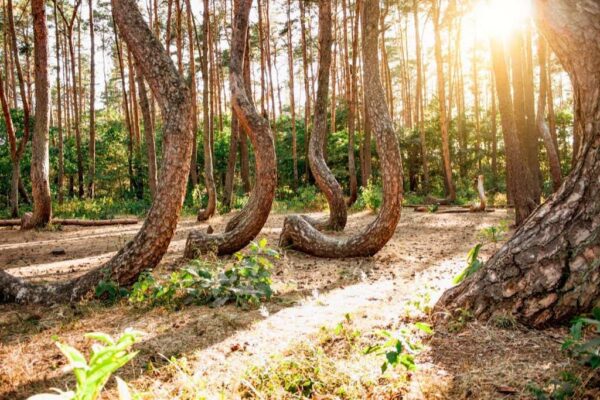
Situated on the outskirts of the charming Gryfino town, the Crooked Forest stands as a captivating wonder of nature, leaving visitors in awe of its unexplained beauty. In this picturesque landscape, a cluster of majestic pine trees proudly stands tall, each one uniquely shaped with a distinct 90-degree angle at its base, gracefully leaning towards the north.
During the 1930s, these magnificent pines were carefully planted in this location. However, it was not until a decade later that the trunks began to display their distinctive curvature, adding to the allure of this natural wonder. Amidst numerous theories, a lively discussion ensues about whether the curvature was crafted through deliberate manipulation of the trees or if it occurred organically and unintentionally, adding intrigue to the travel experience.
No matter the reason, it’s difficult to ignore the haunting aura of the trees, particularly when the rest of the forest is teeming with robust, impeccably aligned pine trees. It’s a fantastic destination for a peaceful trek amidst the tranquility of nature.
Auschwitz-Birkenau

Traveling to Auschwitz-Birkenau is an incredibly impactful journey that is difficult to put into words. As travelers approach the entrance to the memorial and museum in Oswiecim, they are immediately struck by the immense size of the infamous Nazi concentration camp.
Immersed in the rich history of World War II, Auschwitz-Birkenau has captivated the hearts of over 25 million travelers who seek to pay homage to the victims of the camps.
Morskie Oko Lake
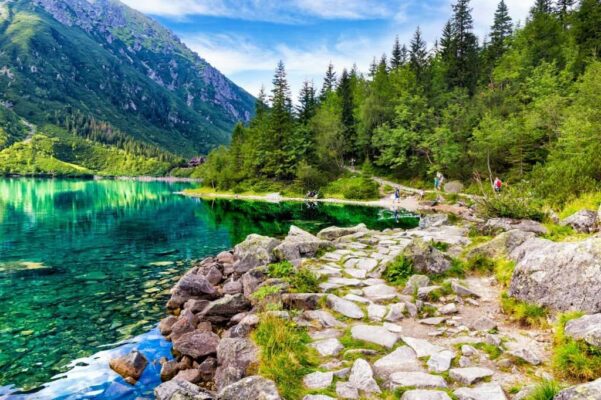
Nestled deep within the embrace of Tatra National Park and encircled by towering mountains and Swiss pines, this lake stands as a cherished haven for individuals spanning all age groups. To reach this idyllic spot, an uncomplicated yet lengthy paved hike through shaded woodlands is necessary. Over the course of the year, the lake undergoes a captivating transformation of hues, shifting from a profound cobalt blue to a gentler shade of turquoise.
The expanse of Tatras National Park spans both Poland and Slovakia. In the Polish segment, the park boasts an array of attractions including over 600 caves, snow-draped summits, and a collection of waterfalls, the most notable being the 70-meter-tall Wielka Siklawa.
A majority of the park’s terrain is traversable, featuring an extensive network of trails totaling more than 270 kilometers in length, catering to hikers of all levels and preferences.
Wawel Cathedral
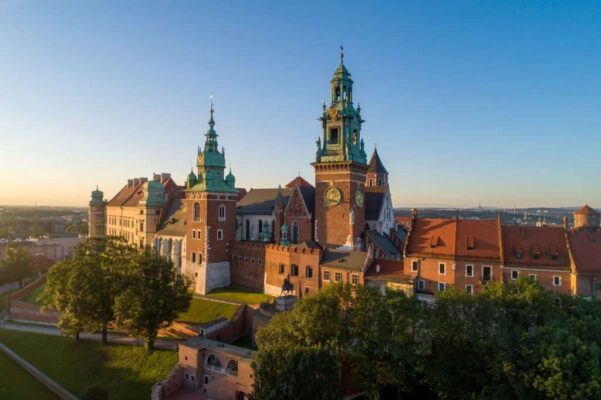
Over a millennium ago, the foundation of the initial Wawel Cathedral was laid, yet the present-day structure is an enthralling amalgamation of Romanesque, Baroque, Gothic, and Neoclassical architectural elements. Constructed during the 14th century, this rendition emerged from the ashes of an extensive fire that razed earlier edifices to the ground.
Throughout the passage of centuries, the cathedral fulfilled the role of the final resting place for Polish monarchs. However, the majority of these tombs have since found their abode within the intricate network of subterranean crypts situated directly beneath the cathedral.
Adjacent to the primary cathedral, an array of smaller structures graces the premises, among them Sigismund’s Chapel, celebrated for its resplendent golden dome. Garnering even greater recognition is the Sigismund Bell, a colossal 11-ton church bell that necessitates the collective strength of twelve individuals to set it resonating. Dominating the landscape at a towering height of 70 meters, the bell tower also doubles as an elevated vantage point offering a sweeping panorama of the city.
Lazienki Park
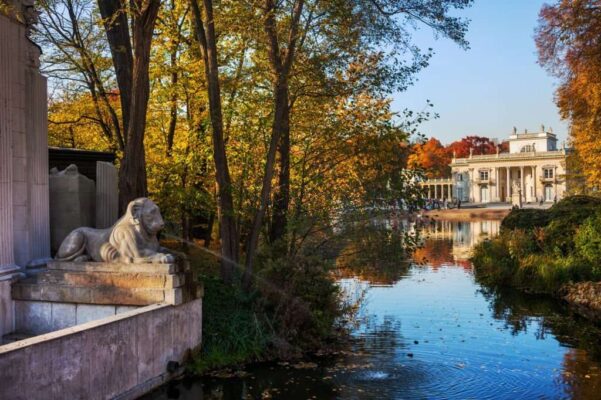
Covering a sprawling expanse of 76 hectares within the heart of the city, Lazienki Park ranks among Poland’s most extensive urban green spaces. Its origins trace back to the 17th century when it was conceived as a bathhouse park for a nobleman. Today, the Palace on the Isle welcomes the public, inviting exploration of both its interiors and the encompassing gardens.
Dotting the landscape are captivating features, including a Classical-theater Isle stage, a platform that continues to host performances to this day. Numerous smaller palaces and structures, repurposed as museums or galleries, grace the gardens, while a classical temple devoted to the goddess Diana adds a touch of antiquity.
A prominent figure within the park is a grand statue of the revered Polish composer Frederic Chopin. During World War II, this statue fell victim to purposeful destruction by German forces as they invaded Poland; however, in 1958, it was faithfully reconstructed utilizing the original mold. A charming tradition unfolds every Sunday afternoon, with free piano concerts captivating audiences at the base of the Chopin statue.
FAQs
Q: What is the best time to visit Poland for outdoor activities?
A: Poland is ideal for outdoor activities during the spring and summer months, from May to September. This period offers pleasant weather for hiking, exploring lakes, and enjoying outdoor festivals.
Q: Are English speakers commonly understood in Poland?
A: Yes, English is widely spoken, especially in tourist areas and larger cities. However, it’s a good idea to learn a few basic Polish phrases to enhance your travel experience.
Q: How is the local cuisine in Poland?
A: Polish cuisine is hearty and flavorful, featuring dishes like pierogi (dumplings), kielbasa (sausage), and bigos (hunter’s stew). Don’t forget to try traditional sweets like paczki (doughnuts) and sernik (cheesecake).
Q: Can I use Euros in Poland?
A: While Poland is a member of the European Union, the currency used is the Polish Zloty (PLN). It’s recommended to exchange your currency to PLN upon arrival.
Q: What are some unique souvenirs to bring back from Poland?
A: Poland is known for its intricate pottery, amber jewelry, and traditional handicrafts. These make for wonderful souvenirs that reflect the country’s culture and craftsmanship.
Q: Are there any visa requirements for visiting Poland?
A: Visitors from many countries, including the United States and European Union member states, can enter Poland for short stays without a visa. However, it’s important to check the specific visa requirements based on your nationality.


